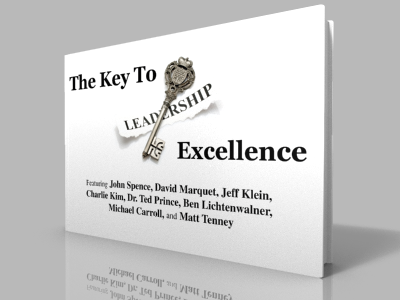In the business world today, “innovation” is quite the buzzword. We’ve all likely heard things like “innovation has to be a top priority in our organization,” “we must be continuously innovating,” “innovation this,” and, “innovate that.” Although the word is used often, there seems to be a lack of clarity on what innovation actually is. In Part 1 of this blog post, we’ll discuss some fascinating research on profitability from the prestigious Perth Leadership Institute that clarifies the issue, and will lay the foundation for how we can create a highly innovative culture in our organization, which we’ll discuss in Part 2 of the post.
Dr. Prince, the founder and CEO of the Perth Leadership Institute, conducted groundbreaking research that links the personality traits of managers directly to impacts on gross margin and expenses. Each personality trait is the result of what is known in Psychology as cognitive biases. Although Dr. Prince found 10 cognitive biases that have significant, direct impacts on gross margin and expenses, there are two biases that, according to his research, have the greatest impact on the bottom line.
One of them, the status quo bias, is also an excellent predictor of whether or not a person will be innovative. The research of the Perth Leadership Institute shows very clearly that innovation has a tremendous impact on gross margin. In fact, we can predict quite accurately how a manager will affect gross margin simply by measuring how innovative that manager is.
Even intuitively, I believe this makes perfect sense. There is a direct correlation between how unique a product or service is and the price someone is willing to pay for it. Thus, the more innovative someone is, the more likely she is to create products and services that add value for the consumer, which also increases the profit margin for the organization offering the product or service.
The status quo bias results in a strong preference for maintaining things the way they have been. It is based on our need to fit in. As you might guess, most people have at least a moderately strong status quo bias. The need for belonging is one of the most powerful human needs, and doing things that buck the status quo can certainly be associated with taking the risk of not being accepted by others. Unfortunately, the stronger this bias is in a person, the less likely he is to come up with innovative solutions to problems that add value to his organization or for customers.
A person with little or no status quo bias is a person who will consistently innovate. This is the type of person who has no problem suggesting and acting on ideas that are completely outside of the proverbial box, even if that idea is rejected as silly by numerous people over long periods of time. In others words, someone with little or no status quo bias typically doesn’t care what other people think about them or their ideas. A good example is the late Steve Jobs, who was known for being one the most innovative people of our time, and also for being a bit of jerk.
One thing you might have noticed in the description above is that creativity was not mentioned. Perhaps the most common misperception about innovation is that it is synonymous with creativity. Although creativity can assist in innovating, it is certainly not necessary. In fact, there is research showing that people who are “too creative” are actually very unlikely to innovate.
This is because innovation has a lot more to do with execution than it does with creativity. Someone who has too many creative ideas often never sticks with one of the ideas long enough to create the disruption in the field, marketplace, etc., that we refer to as an innovation. The most important element of being innovative is the ability to stay with an idea long enough, even in the face of significant opposition, to actually make the idea a reality and have it adopted by at least a small group of people.
A perfect example of this is Bill Gates, another one of the most innovative people of our time. Gates did not create DOS, which was the foundation on which Microsoft was built. He bought DOS from people that were likely much more creative than him. But those people weren’t innovators. They didn’t have the vision and the guts to stick with their idea for years, despite having no real market for it, until the market emerged around their idea. But Bill Gates did. He is an innovator.
In Part 2 of this post, which will appear next week, we’ll discuss the ironic and surprising essence of applying this knowledge toward building a more innovative culture in your organization.
Just CLICK HERE, and I’ll send you this eBook, featuring chapters from John Spence, Jeff Klein, Charlie Kim, Michael Carroll, Ted Prince, David Marquet, and Ben Lichtenwalner.







